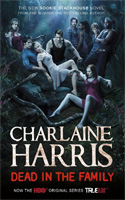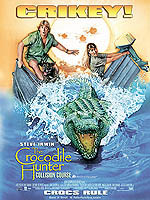Blake Lively The Shallows
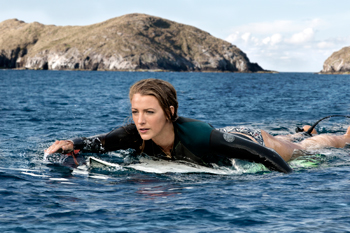
Blake Lively The Shallows
Cast: Blake Lively, Óscar Jaenada
Director: Jaume Collet-Serra
Genre: Drama, Thriller
Rated: M
Running Time: 86 minutes
Synopsis: In the taut thriller The Shallows, when Nancy (Blake Lively) is surfing on a secluded beach, she finds herself on the feeding ground of a great white shark. Though she is stranded only 200 yards from shore, survival proves to be the ultimate test of wills, requiring all of Nancy's ingenuity, resourcefulness, and fortitude.
The Shallows
Release Date: August 18th, 2016
Trailer: YouTube
www.TheShallowsMovie.net
© 2016 CTMG. All Rights Reserved.
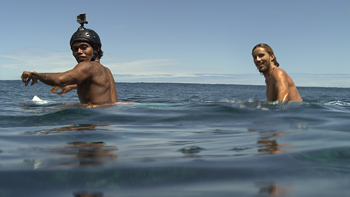 About The Production
About The Production
'This film grabs you on a primal level," says Blake Lively, who plays a young woman stranded just a short distance from shore when she is attacked by a great white shark. 'It's about the power to survive, the power of will. When I read the script, I imagined, -What would I do in that situation?' The way Nancy fights to survive is pretty incredible."
In The Shallows, Nancy (Blake Lively) is seeking solace after the death of her mother. Though she's been a driven medical student, Nancy has also found peace on a surfboard, and now has located what she's looking for – the secret beach that was a special place for her mom. Though she knows it's dangerous to surf alone, she risks it when her travel companion bails – even calling home to let her tight-knit family know that she has found this special place. As she surfs in this beautiful, hidden place, she thinks it will be a chance for her to reflect.
'Unfortunately, she has stumbled into the feeding ground of a great white shark," explains Matti Leshem, who produces the film with his wife and producing partner, Lynn Harris. 'The shark attacks her, but it's just doing what comes naturally. She is never more than a couple hundred yards from shore – she could swim to it – but the shark is in between her and safety."
'I love the combination of a character journey in an elevated genre," says producer Lynn Harris. 'The Shallows is an incredibly suspenseful thriller with a real character at the heart of it – a protagonist who goes through the arc of getting her strength and overcoming her fear."
Indeed, Nancy will need to gather all her strength – her bravery, her intelligence, her resourcefulness, and her creativity – to get out of this situation alive. "She realises she must make do with what little that she has available to her.
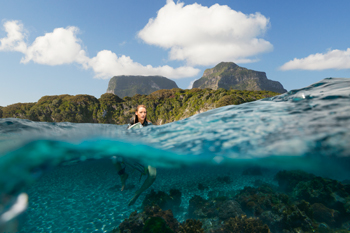 She begins taking inventory of what she can use to survive. From previous knowledge and experience, to summoning primal untapped instincts, to assessing and studying her surrounding environment, to even picking apart her wardrobe/accessories to make tools – she looks for any help she can get in her battle to live. Her will is challenged over and over again. And, like the tide, it continually rises."
She begins taking inventory of what she can use to survive. From previous knowledge and experience, to summoning primal untapped instincts, to assessing and studying her surrounding environment, to even picking apart her wardrobe/accessories to make tools – she looks for any help she can get in her battle to live. Her will is challenged over and over again. And, like the tide, it continually rises." 'This story is incredibly visceral, but it's also one we can all relate to – dealing with our worst fears," says Matti Leshem. 'What does it take to face the thing you never thought you could face? And, of course, on some level, this is a metaphor for everything that is truly challenging, but is embodied in a great white shark."
Nancy finds herself against the apex predator of the ocean. This one is especially large and deadly – doing what comes naturally as it gets the scent of blood and protects its feeding ground, the carcass of a large humpback whale. As resourceful as Nancy becomes, the shark is equally determined to live and will give everything it's got in a pitched battle of wills.
The director orchestrating the combat is Jaume Collet-Serra. 'Every movie he's made has had an extraordinary amount of suspense," says Lynn Harris. 'He gets great performances from his actors, and he understands every scene and every frame from the point of view from the audience – what's going to be the most satisfying experience for them in that moment."
Jaume Collet-Serra was excited to join the project because, he says, 'it had so many elements that put together make a mega-challenge for a director. It has one location. It has water. Animals. And a CG character. Any of these elements separately is a challenge, so to have them all in one movie was really exciting."
In the lead role, the filmmakers cast Blake Lively, who rose to fame from her role in 'Gossip Girl," and received critical acclaim for her performance in The Age of Adaline.
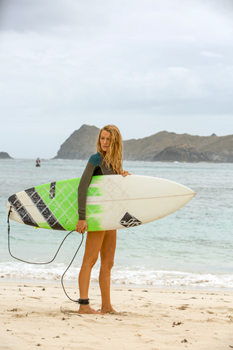 'She looks like a young woman who's been surfing all her life, but she carries her intelligence with her – she's got real gravitas, as a person you can believe is a medical student," says Lynn Harris. 'Her performance is powerful and emotional – and it's a difficult role, as she's in every shot of the movie."
'She looks like a young woman who's been surfing all her life, but she carries her intelligence with her – she's got real gravitas, as a person you can believe is a medical student," says Lynn Harris. 'Her performance is powerful and emotional – and it's a difficult role, as she's in every shot of the movie." 'Blake Lively is not only very likable, she's very tough, very smart, and very resourceful," says Jaume Collet-Serra. 'Those are the traits we wanted to come through in Nancy."
'Nancy is a medical student, which comes in handy when she's bleeding out on a rock in the middle of the ocean!" says Blake Lively with a laugh. 'She's very practical, she's type A, she likes things a certain way. Imagine this woman thrown into the most chaotic circumstance you could fathom. Not a great fit. That's what's so interesting – her experience tests her character on every front. You see both the strengthening and disassembling of this woman as she fights to survive. It's a neat examination. As responsible as she is though, she must have a thrill-seeking desire in her heart, or she wouldn't be such a bad a-double-s surfer!"
'Nancy should be dead, but because of her ingenuity, because of her intelligence, because of her will to survive, she does incredible things," says Matti Leshem.
'I had to train – not only to learn how to surf as best as I could, but there was a lot of endurance training for my body to keep up with the physicality of the role," says Blake Lively. 'I didn't even have a stunt double until the last two weeks on the film – I did all the heavy stunts myself leading up to that. Except for the surfing, of course! I was lucky to have the incredible Isabella Nichols, the #1 junior surfer in the world, as my surfing hero. As for the other heavy stunts, I had my share of -battle wounds,' but it made me proud to be able to do that work."
'It was all the small things, those that come naturally after time, that I was able to her tips on and help her improve her technique. She took to it all quite easily, which was awesome to see. I'd be there next to her when any of the filming involved the actual action of surfing happened. She would bounce ideas off me, and I'd do the same, which worked really well."
In 2010, Blake Lively spent time in the water, diving with great white sharks and conservationists which gave her a greater connection to the story. 'I went diving with great white sharks in Gansbaai, South Africa," she shares. 'I was face-to-face with those majestic creatures. It was incredibly eye opening, because I was always terrified of great white sharks, but being in the water with them, being within their habitat, they don't look like big, monstrous creatures – they're beautiful, peaceful and serene. That was helpful, because in this movie, I'm not thinking of the shark as an attacker – the shark is a remarkable creature, simply trying to survive. As is Nancy."
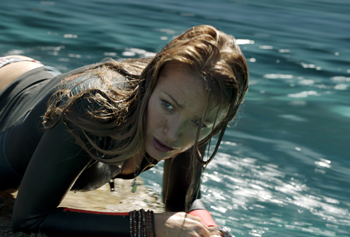 Making a movie usually means you're surrounded by many people, but there were times when Blake Lively had to put herself into her character's shoes. For one, a wide helicopter shot of Lively alone on the rock, it naturally meant that no one else could be around. 'I got to our set – our rock and buoy – out in the middle of the ocean, and everybody left me there and went back to the shore. I'm sitting there, three or four hundred yards from shore, waiting, alone, in aggressive, rising tide for the helicopter with the camera to crest over the mountain. After a few minutes of pure solitude, the chopper came in, did the shot, and left me alone again. There was a good thirty minutes total where it was just me, and I really felt the enormity of the situation. It was so beautiful, and also so terrifying. It was a moving experience."
Making a movie usually means you're surrounded by many people, but there were times when Blake Lively had to put herself into her character's shoes. For one, a wide helicopter shot of Lively alone on the rock, it naturally meant that no one else could be around. 'I got to our set – our rock and buoy – out in the middle of the ocean, and everybody left me there and went back to the shore. I'm sitting there, three or four hundred yards from shore, waiting, alone, in aggressive, rising tide for the helicopter with the camera to crest over the mountain. After a few minutes of pure solitude, the chopper came in, did the shot, and left me alone again. There was a good thirty minutes total where it was just me, and I really felt the enormity of the situation. It was so beautiful, and also so terrifying. It was a moving experience." Jaume Collet-Serra says that Blake Lively was much more than an actor for hire. Because she is in nearly every shot of the movie, he says, 'She was really a partner in the storytelling. We tailored it for her – everything is filtered through her. We all agreed on the movie we were making, and she was very interested in collaborating with us on that process."
Part of that is Blake Lively's view that the shark is not a demon at all, but another being – like Nancy – trying to survive. 'Sharks are villainised – people think of them as scary, as cruel, as monsters, but they're not that at all. The shark is a wild animal in its habitat," Blake Lively continues. 'Nancy has a lot of sympathy for the shark, even as she's fighting to survive. I think that's pretty remarkable to find empathy and connection in such painful times. Nancy has this revelation when she sees that mankind has hurt the shark first. He has been hunted. Brutally. And not for means of man's survival. For pleasure. You then understand the shark's motive, his determination, his will, his desperation to conquer as his survival also depends on it. So it becomes a test of two wills. Both victims. But only one can live while the other remains. It's a tragedy. It's at that point in the story: nature."
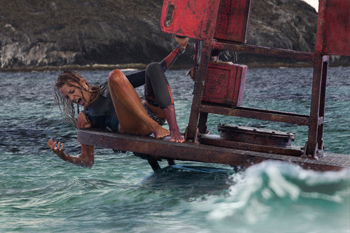 Also featured in the film are Angelo Josue Lozano Corzo and Jose Manuel Trujillo Salas (a/k/a 'Yuco"), who surf alongside Nancy at the beach. Jaume Collet-Serra says, 'Angelo had just won a championship in Mexico, so I Googled him, and I looked at all of his videos. In one of them, he was surfing with Yuco. I said, -I want both of those guys,' and it really paid off – they needed not only to be great surfers, but great friends."
Also featured in the film are Angelo Josue Lozano Corzo and Jose Manuel Trujillo Salas (a/k/a 'Yuco"), who surf alongside Nancy at the beach. Jaume Collet-Serra says, 'Angelo had just won a championship in Mexico, so I Googled him, and I looked at all of his videos. In one of them, he was surfing with Yuco. I said, -I want both of those guys,' and it really paid off – they needed not only to be great surfers, but great friends." Lozano Corzo says that Blake Lively was game for anything – even picking up some surfing tips from the experts, and returning the favour. 'She was really nice, kind and fun to work with," he says. 'She adapted very well to the surfing – we gave her some quick paddling training, and she picked it up quick. She already knew a couple of things from past experiences, so I think it was easy and fun for her. We gave her some other surf tips that we thought would apply as well, and she got them fast and put some of her own style on it too. And she gave us some acting tips that Yuco and I were stoked to receive."
For Lozano Corzo and Trujillo Salas, surfing in front of the cameras for the film was just another day on the water. 'It was very normal for me – just surfing as always, having fun," says Lozano Corzo.
'Yuco and I did get a couple of really fun, dreamy days while we were shooting for the movie. The cameramen were really good and had worked on surf movies before, so it wasn't hard to connect with them."
Óscar Jaenada rounds out the cast as Carlos, a local who is Nancy's guide to the beach. 'He's the one who knows the path to arrive to that beach – it's a very hidden beach and it's quite difficult to find," says Jaenada. 'Later, he realises that something is happening in that beach, and he comes to see."
Filming On Australia's Lord Howe Island
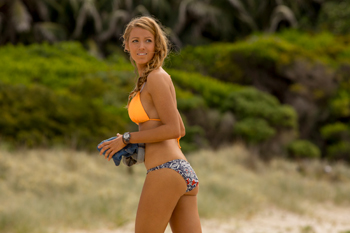 The film's primary location was Lord Howe Island, a small island approximately 600 nautical miles east of Sydney. Moviegoers will be drawn to the location for the same reasons Nancy is drawn to hers: it's one of the few unspoiled, undeveloped natural spots left on Earth.
The film's primary location was Lord Howe Island, a small island approximately 600 nautical miles east of Sydney. Moviegoers will be drawn to the location for the same reasons Nancy is drawn to hers: it's one of the few unspoiled, undeveloped natural spots left on Earth. Most of the island is virtually untouched forest, with many plants and animals that are found nowhere else in the world. In the surrounding turquoise waters, giant clams, sea turtles, clownfish, lionfish, tuna, kingfish, butterfly fish and the doubleheaded wrasse can all be found. 'It's a UNESCO World Heritage site, it's governed by a national park, all the waters around it are governed by a marine park, and all of the people who live on the island are fifth- and sixth-generation islanders, who bring a deep and intrinsic value to everything that happens on the island. The location is really the heart and soul of the film," says Duncan Jones, the film's location manager.
Lively says of Lord Howe Island, 'It was really special to get to shoot there. Such a beautiful, pristine dot of land in the middle of the ocean. It's a little hidden treasure. After this film, everybody is going to want to go there, because it's that captivating on camera."
Duncan Jones was the first to suggest Lord Howe Island as a possible location. 'It's a two-and-a-half-hour flight from Sydney, between Australia and New Zealand in the middle of the ocean," Matti Leshem recalls. 'I went there with Jaume Collet-Serra and Flavio Labiano, our director of photography. Flavio, a true artist, sticks his head out of the window and says, -Look, look at that beach down there.' I looked at the beach, I turned to Jaume Collet-Serra, and I knew we had found our location."
'Our attitude was, -Four frames of that beach are worth more than two hours of another beach that is not perfect,'" says Jaume Collet-Serra.
Matti Leshem says that there were a few requirements from the location. 'We had to have a natural cove – Blake Lively's character has to see the shore at all times. We needed a location that could tell the story. But beyond that, I wanted to shoot in a place no one's seen before, and there just aren't very many places like that left in the world," says Matti Leshem.
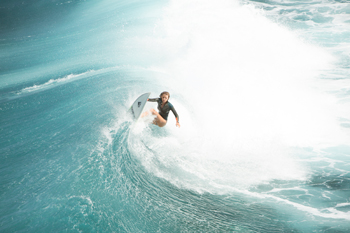 And in fact, The Shallows is the first largescale film production ever to shoot at Lord Howe Island. As one might imagine, going where no film production has gone before presented a challenge to the film crew. 'There are 350 residents and 400 beds for guests – that's it," says Harris. 'There's no cellular service, very little Wi-Fi, few cars."
And in fact, The Shallows is the first largescale film production ever to shoot at Lord Howe Island. As one might imagine, going where no film production has gone before presented a challenge to the film crew. 'There are 350 residents and 400 beds for guests – that's it," says Harris. 'There's no cellular service, very little Wi-Fi, few cars." 'Logistically, it was the most complicated project I've ever been involved in," adds Jones. 'We had to get 100 film crew here, with all of our equipment – requiring chartering 45 landing barges." Though the production did bring trucks to the island, that is not how things usually go on Lord Howe Island. 'Everything on the island moves on foot, on bike, or on one of the few cars that are there, so we were limited in what we could bring and required our crew to get creative."
Ironically enough, stunt coordinator Glenn Ruehland notes that the production had to employ shark shields to keep real-life sharks from entering the filming area.
Jaume Collet-Serra and his crew faced another, unexpected challenge. 'It's supposed to be a virginal beach, but we have a large film crew. Once we'd picked a spot on the beach, blocked the action, and brought in the equipment, you'd see footprints everywhere – we would have to make that look pristine and untouched. We ended up creating paths of people walking single-file, so that we could erase the footprints as much as possible."
The filmmakers shot in the open water of Lord Howe Island for ten days. 'The power of the ocean should never be underestimated," Jaume Collet-Serra continues, describing the process. 'Imagine trying to direct a film crew to place an enormous set in open ocean with huge waves, while Blake is on a surfboard and a camera operator has to capture everything, and meanwhile the weather is changing, which changes the light for a shot that has to match the shot you just captured."
'The ocean is powerful and unpredictable," adds Matti Leshem. We were at its mercy and the mercy of the weather at all times. In the midst of mother's nature chaos, we needed to do the meticulous work of making a film, which is very precise and needs to be centered. It was very challenging but we think the rewards are well worth it."
As an example of the difficulties of shooting on water, Jaume Collet-Serra cites one of the most seemingly simple scenes. 'The most impossible scene we shot was a dialogue scene – Blake Lively sitting on the surfboard, talking to the two surfers 30 yards away," Jaume Collet-Serra continues. 'In order to shoot a dialogue scene, you need to have the camera stabilised. So we had a crane anchored at four points of a boat and grips trying to right the crane. We had divers holding Blake Lively so that she doesn't drift, and the two surfers trying to find their spot. We had nine boats, 70 people, and divers in the water to get what seems like a simple scene."
Still, in such a beautiful location, it all paid off, as the filmmakers – including 'B" Camera Operator/Underwater Director of Photography Simon Christidis, A.C.S. – were able to capture some amazing footage.
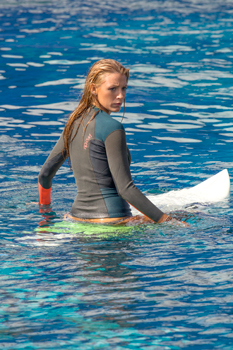 'Simon Christidis, our underwater photographer, was amazing. He'd take the camera and shoot Angelo and Jose surfing, then in the afternoon, I'd run up to him like a little boy on Christmas to see what amazing shots he'd got. The surf sequence in the film is just incredible, and it's all to the credit of Simon and the surfers."
'Simon Christidis, our underwater photographer, was amazing. He'd take the camera and shoot Angelo and Jose surfing, then in the afternoon, I'd run up to him like a little boy on Christmas to see what amazing shots he'd got. The surf sequence in the film is just incredible, and it's all to the credit of Simon and the surfers." The film was also shot in the main water tank at the Village Roadshow Studios on the Gold Coast, in Queensland, Australia.
Creating The Shark And The Visual Effects
In creating the shark, Jaume Collet-Serra wanted to create a worthy adversary that would keep audiences on the edge of their seats. 'I wanted the shark to be a presence for half the movie," Jaume Collet-Serra says. 'I wanted to reveal it slowly, then have it be a force of nature. My reasoning was that if Nancy doesn't get a good look at the shark, then the audience shouldn't get a good look at it, either."
For all of the obvious reasons, the film's great white shark would be created digitally. Great whites are a threatened species, and they generally do not survive well in captivity. And that doesn't even get into the danger of filming a movie near an unpredictable, wild animal.
Jaume Collet-Serra teamed with the art department for the design of the shark. 'I came to the conclusion that the shark had to be a female," says the director. 'Females are slightly bigger, and most have great scars from mating. Visually, they're scarier, as they are more protective.
Scott E. Anderson served as the film's visual effects supervisor. 'Both Jaume Collet-Serra and Diana Ibanez, our film's visual effects producer, did a lot of research," he says.
'Through Jaume Collet-Serra's notes and our conversation, Diana Ibanez and he put together research packages – moments of sharks that Jaume Collet-Serra liked, general actions and behaviours of sharks. That really was our basis of library – little moments that Jaume Collet-Serra liked."
In animating the shark, Scott E. Anderson's greatest challenge was to create a believable character. 'The shark is very consistent in its character," he says. 'Nancy wanders into its area accidentally, and interrupts the shark's world. And after the shark has wounded her, the shark just thinks of Nancy as food. It's nothing personal – the shark is just being a shark. Towards the end, when Nancy is fighting for her own survival, the shark fights back. Both of them are just doing what they need to do."
The sheer size of the shark made a great difference to the animators. 'I kept telling the animators to think of the shark as a big diesel truck with lots of power and torque, versus a high-revving, German-engineered car," Scott E. Anderson continues. 'It's big and sleek, with a graceful, powerful way of swimming. We use that mass when she's attacking the buoy or hitting anything else – she's got a huge, heavy size to her."
These two intertwined attributes – the shark's character, much of which comes from its size – gave Scott E. Anderson the tools that would deliver the thrills that Jaume Collet-Serra envisioned. 'Jaume Collet-Serra had a real sense of what he wanted for the film's thriller and scare factor – sometimes, it's sneaking up where you don't expect it, and other times it's big, heavy shark coming for you. He was very much playing with that, so getting that real-but-scary balance was very important."
Anderson's team also pulled off a massive amount of water simulation. Though the team did use a sea bob during production to move some water, the size of the shark required an even greater amount of displacement, which was created digitally. 'Years ago, you'd never think of tackling this kind of project on this scale," says Anderson. 'It's amazing how many of our companies were able to help us with both the shark animation and the extensions of water and water sim."
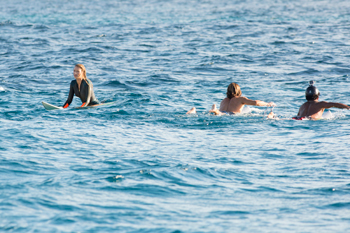 Scott E. Anderson's teams also created a remarkable amount of set extensions. The parts of the film that required a more controlled environment than Lord Howe Island were shot in a water tank, with the environment added in digitally. 'We created a virtual, aquatic world," says Anderson. 'It was a massive undertaking – probably three-quarters of the movie involves visual effects. During production, Jaume Collet-Serra captured a beautiful, 360 environment from the position of the rock island that Nancy is on. That 360 environment became our virtual world that covered everything from sunny day to cloudy night to early morning, all of the times you see in the film."
Scott E. Anderson's teams also created a remarkable amount of set extensions. The parts of the film that required a more controlled environment than Lord Howe Island were shot in a water tank, with the environment added in digitally. 'We created a virtual, aquatic world," says Anderson. 'It was a massive undertaking – probably three-quarters of the movie involves visual effects. During production, Jaume Collet-Serra captured a beautiful, 360 environment from the position of the rock island that Nancy is on. That 360 environment became our virtual world that covered everything from sunny day to cloudy night to early morning, all of the times you see in the film." About The Seagull
At one key point in the film, Nancy and a seagull – which has also been attacked by the shark – take refuge on a rock; she names the bird Sully, and they look out for each other.
The question of how to capture these scenes was a major concern before filming began. They considered a puppet, but a puppet would never be as expressive as a real bird could be.
The next consideration was a CG bird. 'But I said, I've never seen a good CG seagull," says Matti Leshem. 'I don't believe people can do birds very well. So one day, I was having lunch, and a few seagulls came close – close enough for me to feed them out of my hand. So I said to Jaume Collet-Serra, -If I can feed this seagull out of my hand, then some great animal trainer is going to be able to train them. I fed the bird and Jaume instinctively pulled out his iphone and started shooting. It was the moment of epiphany."
'So we went to our animal trainer, Katie Brock-Medland, and asked, -Have you ever trained a seagull?'" says Lynn Harris. 'She is the most patient, kind, loving animal whisperer in the world – and somehow, she ended up training the seagull. It's extraordinary – we would not have the movie we have without Sully."
'Seagulls are food-motivated – anybody who's been to a fish-and-chips shop knows that," says Katie Brock-Medland. 'So, food motivation was a good part of our training. We would feed them prawns, fish bits, mealworms – any kind of treat."
Simply finding the bird was the first challenge. 'You can't just go to the beach and collect an animal," says Katie Brock-Medland. 'However, there are many seagulls in captivity in a rehab situation – they all have broken wings."
The filmmakers identified six gulls to play the role in the film, though one stood out from the pack. 'Some were good at standing, some at vocalising, but Sully had all the bases covered," says John Medland, Katie Brock-Medland's partner. Sully has been in rescue care for nine years.
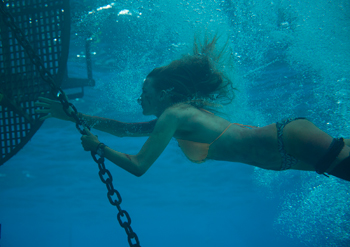 Matti Leshem in particular became attached to the bird. Just ask him. 'I took a real interest in him, and I really believed in our animal trainers, and it paid off," he says. 'Now Sully is the Marlon Brando of seabirds."
Matti Leshem in particular became attached to the bird. Just ask him. 'I took a real interest in him, and I really believed in our animal trainers, and it paid off," he says. 'Now Sully is the Marlon Brando of seabirds." 'He'll go back to his caregivers with a nice CV and a financial donation to help the rest of the wild care in his facility," says Katie Brock-Medland.
About The Stunts
'Working on land is hard enough when you're doing action," says stunt coordinator Glenn Ruehland, 'but when you're working on water and doing action at the same time, or working underwater and doing action, it adds a second or even third element of danger. I had a very experienced team, and we methodically went through our safe practices every morning, rehearsing with our stunt doubles, before we brought in the actors, to make sure we could get the shots that we needed."
Glenn Ruehland's team worked very closely with the marine team and even the VFX team, piloting the sea bob with the fin that would both stand in for the shark during shooting and displace the water to create that effect practically.
The Shallows
Release Date: August 18th, 2016
Trailer: YouTube
www.TheShallowsMovie.net
© 2016 CTMG. All Rights Reserved.
Have You Seen This?
MORE



